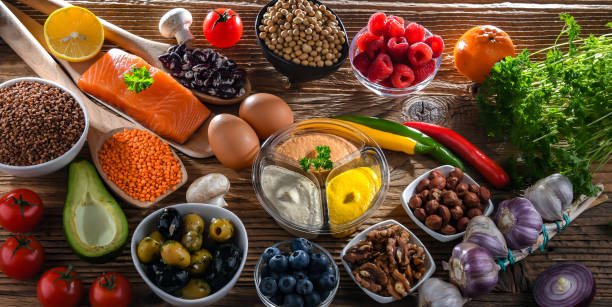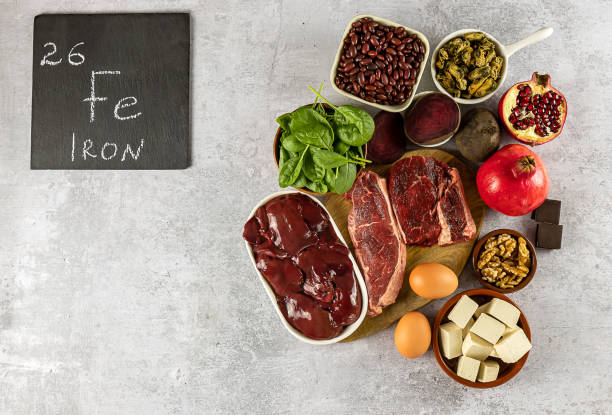Living with chronic pain can feel like an uphill battle. Whether it’s a constant ache, a sharp sting, or a dull throb, the discomfort can seep into every aspect of your life, making even simple tasks feel overwhelming. While medications and therapies are often the go-to solutions, there’s another powerful tool that’s frequently overlooked: nutrition.
What you eat plays a significant role in how your body manages pain. From reducing inflammation to supporting overall health, the right diet can be a game-changer for those dealing with chronic pain. In this post, we’ll explore how nutrition impacts chronic pain, which foods can help (or harm), and practical tips for incorporating pain-fighting foods into your daily routine.
The Link Between Nutrition and Chronic Pain
Chronic pain is often linked to inflammation, a natural response by your body to injury or illness. However, when inflammation becomes chronic, it can exacerbate pain and contribute to conditions like arthritis, fibromyalgia, and neuropathy. This is where nutrition comes in. Certain foods can either fuel inflammation or help reduce it, making your diet a key factor in managing chronic pain.
Research shows that a balanced, anti-inflammatory diet can:
- Reduce inflammation and swelling
- Improve joint and muscle health
- Boost energy levels
- Support mental well-being
- Enhance the effectiveness of other treatments
Foods That Fight Chronic Pain
If you’re living with chronic pain, incorporating these nutrient-rich foods into your diet can make a noticeable difference:
1. Fatty Fish
Fish like salmon, mackerel, and sardines are rich in omega-3 fatty acids, which have powerful anti-inflammatory properties. Aim to eat fatty fish at least twice a week.
2. Leafy Greens
Spinach, kale, and Swiss chard are packed with antioxidants and vitamins that help combat inflammation and support overall health.
3. Berries
Blueberries, strawberries, and raspberries are loaded with antioxidants that reduce oxidative stress and inflammation.
4. Nuts and Seeds
Walnuts, flaxseeds, and chia seeds are excellent sources of healthy fats and fiber, which can help reduce inflammation and improve digestion.
5. Whole Grains
Oats, quinoa, and brown rice are high in fiber and nutrients that support gut health and reduce inflammation.
6. Turmeric
This bright yellow spice contains curcumin, a compound known for its anti-inflammatory and pain-relieving properties.
7. Ginger
Ginger has been shown to reduce muscle pain and inflammation, making it a great addition to teas, smoothies, or meals.
8. Olive Oil
Extra virgin olive oil is rich in monounsaturated fats and antioxidants, which can help reduce inflammation and improve heart health.
Foods to Avoid
Just as some foods can help reduce chronic pain, others can make it worse. Here are the top culprits to limit or avoid:
1. Processed Foods
Packaged snacks, frozen meals, and fast food often contain trans fats, refined sugars, and additives that promote inflammation.
2. Sugary Drinks
Sodas, energy drinks, and sweetened teas are high in sugar, which can spike inflammation and worsen pain.
3. Refined Carbohydrates
White bread, pasta, and pastries can cause blood sugar spikes and increase inflammation.
4. Red and Processed Meats
These meats are high in saturated fats and compounds that can trigger inflammation.
5. Alcohol
Excessive alcohol consumption can increase inflammation and interfere with pain management.
How to Build a Pain-Fighting Diet
Transitioning to an anti-inflammatory diet doesn’t have to be overwhelming. Here are some practical tips to get started:
1. Plan Your Meals
Take time each week to plan meals that include a variety of anti-inflammatory foods. This can help you stay on track and avoid unhealthy choices.
2. Cook at Home
Preparing meals at home allows you to control the ingredients and avoid processed foods.
3. Snack Smart
Keep healthy snacks like nuts, seeds, and fresh fruit on hand to curb cravings and avoid sugary treats.
4. Stay Hydrated
Water is essential for flushing out toxins and reducing inflammation. Aim for at least 8 glasses a day.
5. Experiment with Spices
Incorporate anti-inflammatory spices like turmeric, ginger, and cinnamon into your meals for added flavor and health benefits.
The Role of Supplements
While whole foods should be your primary source of nutrients, supplements can help fill in the gaps. Here are some that may benefit those with chronic pain:
- Omega-3 Fatty Acids: If you don’t eat enough fatty fish, consider a fish oil supplement.
- Vitamin D: Low levels of vitamin D are linked to increased pain sensitivity.
- Curcumin: A turmeric extract that can help reduce inflammation.
- Magnesium: This mineral supports muscle relaxation and nerve function.
Always consult a healthcare provider before starting any new supplements.
Real-World Applications: Making It Work for You
Here’s how to incorporate these principles into your daily life:
- Breakfast: Start your day with a smoothie made with spinach, berries, and flaxseeds.
- Lunch: Enjoy a quinoa salad with leafy greens, chickpeas, and olive oil dressing.
- Dinner: Grill salmon with a side of roasted sweet potatoes and steamed broccoli.
- Snacks: Munch on a handful of walnuts or an apple with almond butter.
For more insights on managing chronic pain, check out our previous blog post on Acute vs. Chronic Pain: Key Differences and Treatment.
Final Thoughts: Food as Medicine
Chronic pain can feel like a constant companion, but the foods you eat have the power to either soothe or exacerbate your symptoms. By focusing on an anti-inflammatory diet rich in whole, nutrient-dense foods, you can take control of your pain and improve your overall quality of life.
Remember, small changes can lead to big results. Start by incorporating one or two pain-fighting foods into your diet today, and build from there. For more resources on self-care, mindfulness, and personal growth, visit Venzec.icu.
By understanding the connection between nutrition and chronic pain, you’re taking a proactive step toward better health. What’s one anti-inflammatory food you’re excited to try? Share your thoughts and let’s keep the conversation going!









